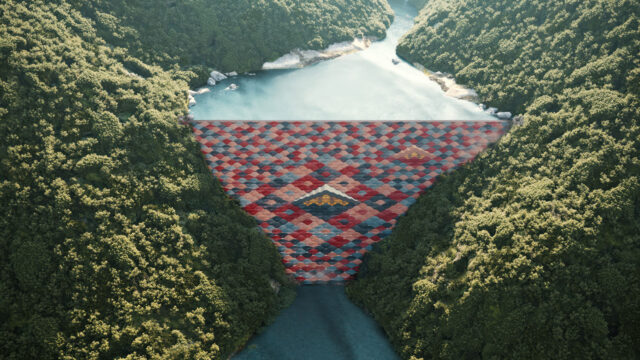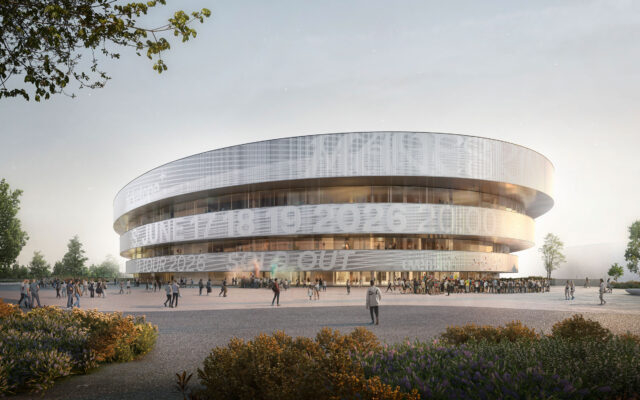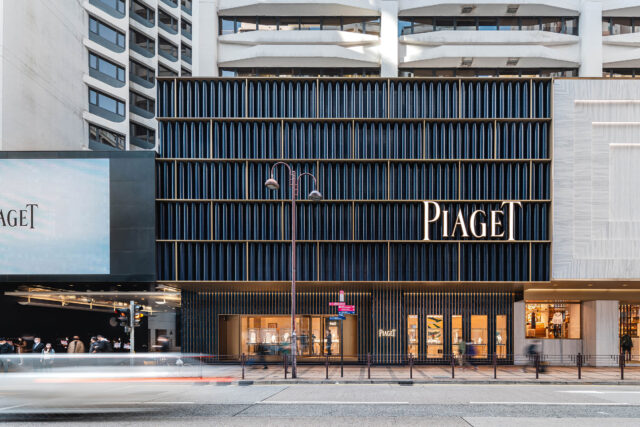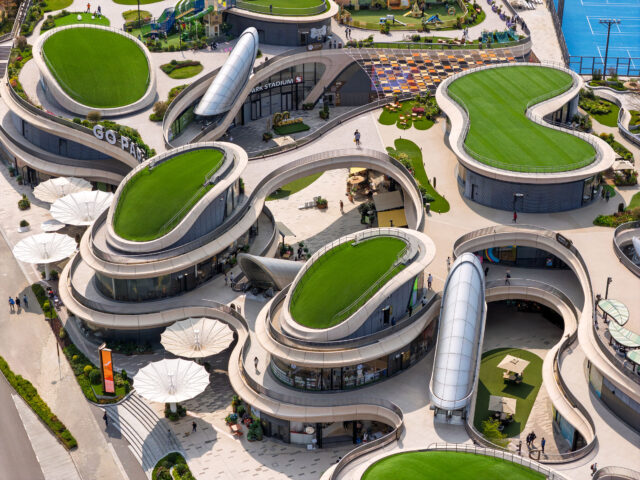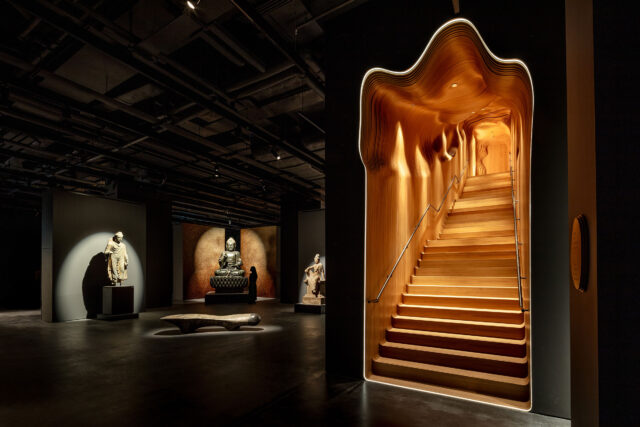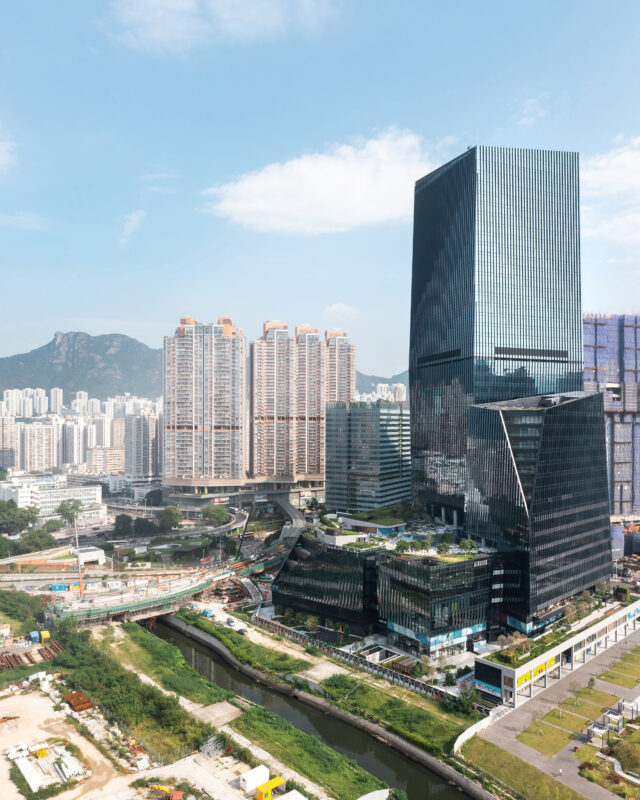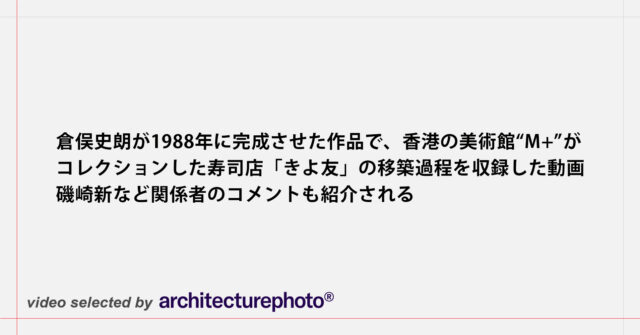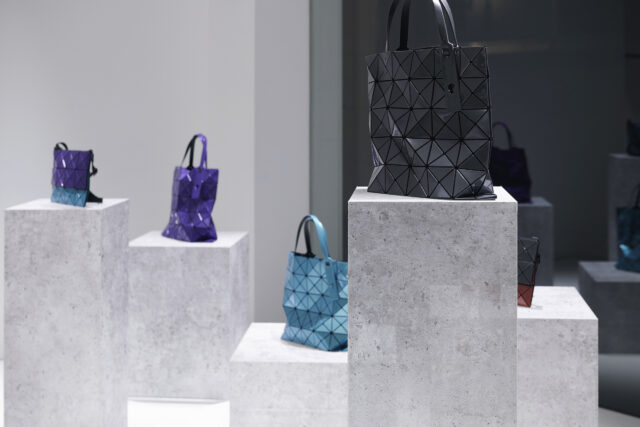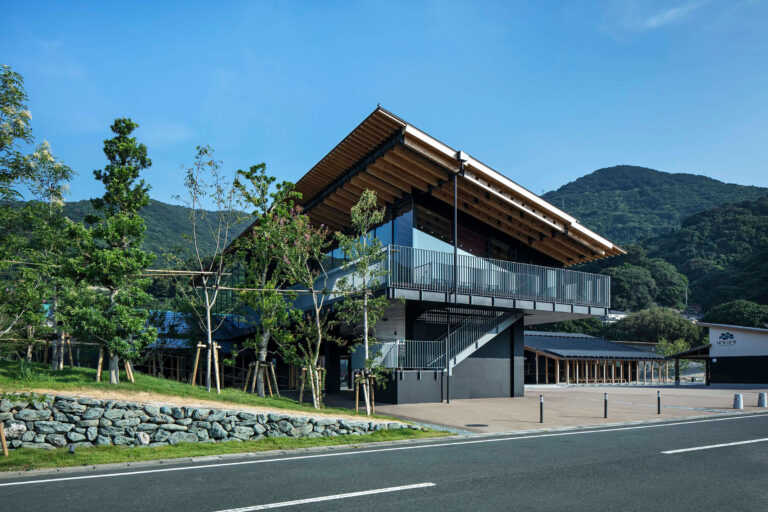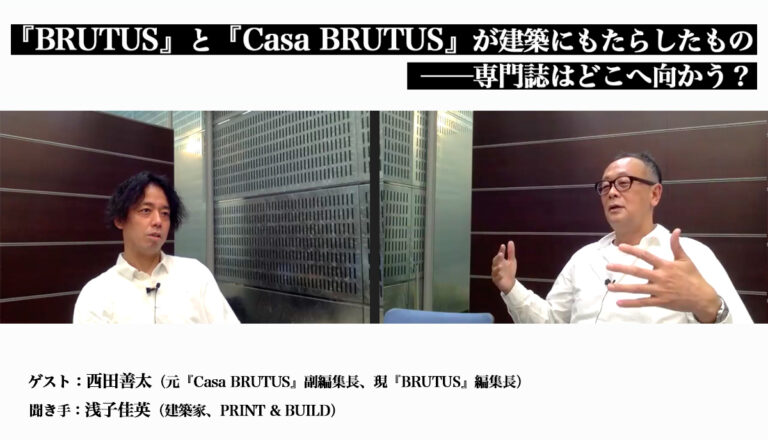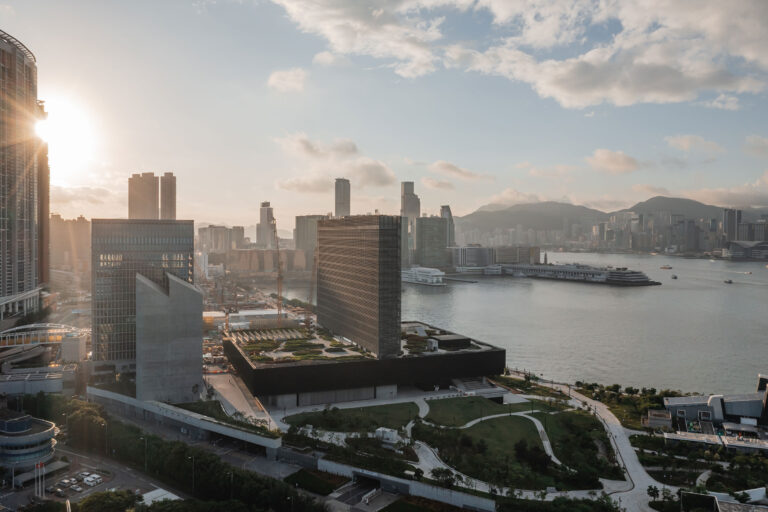
SHARE ヘルツォーグ&ド・ムーロン、TFPファレルズ、アラップによる、中国・香港の美術館「M+」。アジア初の世界的な視覚文化のミュージアムで、ファサードに大型スクリーンを備えた記念碑的な外観と、埋め立て地だからこそ生まれた巨大な地下展示空間を含む33のギャラリーをもつ建築





ヘルツォーグ&ド・ムーロン、TFPファレルズ(ローカルパートナー)、アラップ(エンジニアリングコンサルタント)が設計した、中国・香港の美術館「M+」。アジア初の世界的な視覚文化のミュージアムで、ファサードに大型スクリーンを備えた記念碑的な外観と、埋め立て地だからこそ生まれた巨大な地下展示空間を含む33のギャラリーをもつ建築となっています。本記事では写真とテキストに加え約15分の美術館をガイドする動画も掲載します。
こちらはリリーステキストを抜粋して翻訳したものです
香港のM+が2021年11月12日(金)に一般公開。アジア初の世界的な視覚文化のミュージアム
(2021年11月11日、香港)香港の西九龍文化区にあるアジア初の世界的な現代視覚文化ミュージアム「M+」は、2021年11月12日(金)に一般公開され、3日間の週末には誰もが楽しめる祝賀プログラムが用意されています。
オープニング・ディスプレイでは、香港、大中華圏、アジアをはじめとする世界各国のビジュアル・アート、デザイン、建築、動画など、M+の傑出したコレクションを紹介します。これらの展示では、33のギャラリーと館内のその他のスペースにある約1,500点の作品が紹介されます。
新しいギャラリーのオープニングを飾る6つの展覧会では、M+が2012年から構築してきたコレクションの中心にある、包括的な学際的、地域的なテーマや物語をご紹介します。
─ 香港:Here and Beyond(G/F、メインホールギャラリー):「Here」、「Identities」、「Places」、「Beyond」の4つの章で構成され、1960年代から現在までの香港の変貌とユニークな視覚文化を表現しています。
─ M+ Sigg Collection: M+ Sigg Collection: From Revolution to Globalisation(レベル2、シグギャラリー):M+ Siggコレクションから1970年代から2000年代までの中国現代美術の発展を年代順に紹介しています。
─ Things, Spaces, Interactions(レベル2、イーストギャラリー):過去70年間の国際的なデザインと建築をテーマ別、年代別に紹介し、今日の生活との関連性を探る。
─ Individuals, Networks, Expressions(レベル2、南ギャラリー):アジアの視点から語られる戦後の国際的なビジュアルアートの物語です。
─ アントニー・ゴームリー「Asian Field」(レベル2、ウェストギャラリー):世界的に有名なイギリス人彫刻家が、2003年に広東省の村の300人の村人たちと5日間かけて制作した数万個の土偶の大規模なインスタレーション。
─ The Dream of the Museum(レベル2、コートヤードギャラリー):M+のアジアにおけるユニークなコンテクストの中心となる、コンセプチュアル・アートの世界的な作品群です。
また、メインホールでは、台湾を代表する書道家、トン・ヤン・ツォー(Tong Yang-Tze)の作品を展示しています。また、M+の地下にある大規模な作品展示スペース「ファウンド・スペース」では、ダイナミックなインスタレーションの第一弾として、アーティストのチェン・ジェン(Chen Zhen)とダン・ヴォ(Danh Vo)の作品が展示されます。ヘグ・ヤン(Haegue Yang)による新しいM+ コミッションでは、高さの異なる天井から吊るされた長い金属製のベルの組紐が特徴的です。M+のファサードには、コレクションのハイライトビデオと、ヴァンサン・ブロケール(Vincent Broquaire)による10部構成のアニメーション「How to Build a Museum」が特集されています。
世界的に有名な建築事務所であるヘルツォーグ&ド・ムーロンのグローバルチームが、TFPファレルズとアラップと共同で設計した65,000㎡のM+ビルは、香港で最も象徴的なランドマークの一つであり、その建築形態は記念碑的であると同時に、都市景観の中でのそのポジションは根本的に開放的です。ビクトリア・ハーバーのウォーターフロントに位置するこの建築物は、印象的なテラコッタ・タイルで覆われたタワーで構成されており、南側のファサードにはM+のコンテンツを表示するためのダイナミックなLEDメディアシステムが設置されています。
M+のミュージアム・ディレクターであるスハンニャ・ラフェル(Suhanya Raffel)は言います。
「M+のビジョンは、視覚文化を通して、共感、尊敬、複数の視点、創造性を促進する学びのコミュニティを構築し、すべての観客が恩恵を受けられるようにすることです。M+は、創造的な学習体験を提供するオープンで快適なプラットフォームを提供することで、人、物、空間を結びつける活発な文化を創造することに専念しています。この美術館が、市の住民や海外からの訪問者にインスピレーションを与えることを願っています。」
M+の副館長兼チーフ・キュレーターであるドリュン・チョン(Doryun Chong)は言います。
「M+の建設は、そのコレクションから美術館そのものに至るまで、約10年にわたる投資と専門知識の集大成であり、香港というユニークなコンテクストを起点としたグローバルな視点から、地理的・年代的に構成された多次元的な物語を話す現代の美術館を創造するためのものです。M+のようなミュージアムは、世界でも他にありません。」
美術館のオープンを記念して、M+では、開館後の最初の3日間の金曜日と週末に、一般の方々を対象としたオープニングプログラムを実施します。特別なツアー、メイキングワークショップ、感覚的な体験、ライブパフォーマンス、上映会、デジタルエンゲージメントなどを行います。大階段では、ドキュメンタリー映画「Building M+」が上映され、「M+ Live Art x Hong Kong Ballet-Five Tiny Dances」が開催されます。専用の学習プログラムでは、香港のさまざまなバックグラウンドやコミュニティグループのご家族や観客の方々に、M+の全貌を知っていただきます。
専用の学習プログラムでは、ご家族やさまざまなバックグラウンドを持つ香港のコミュニティグループの方々に、視覚文化のミュージアムとしてのM+の魅力を存分にお届けします。メディアテークにあるM+の動画コレクションは、マルチメディアアーティストのナム・ジュン・パイクに関連する作品を含む、アーティストの映画やビデオを選んで鑑賞することができます。来年初めにオープンするM+ Cinemaは、香港のアートハウスの中でもユニークな存在であり、容量の異なる3つのシネマハウスで構成されています。
オープンから12ヶ月間は、M+の展覧会に無料でご入場いただけます。特別展、イベント、映画の上映には、別途有料チケットが必要な場合があります。M+の登録方法、開館時間、オープニングプログラムなどの詳細は、M+のウェブサイトをご覧ください。
以下の写真はクリックで拡大します




























こちらはリリーステキストです。
M+ in Hong Kong opens to the public on Friday 12 November 2021 Asia’s first global museum of visual culture
(11 November 2021, Hong Kong) M+, Asia’s first global museum of contemporary visual culture in the West Kowloon Cultural District of Hong Kong, opens to the public on Friday, 12 November 2021 with three weekends of celebratory programmes for everyone to enjoy.
The opening displays feature M+’s pre-eminent collections of visual art, design and architecture, and moving image from Hong Kong, Greater China, Asia, and beyond. The presentations showcase approximately 1,500 works across thirty-three galleries and other spaces in the museum.
To inaugurate the new galleries, six exhibitions invite visitors to explore the overarching multidisciplinary, and interregional themes and narratives at the heart of the collections, which M+ has been building since 2012:
• Hong Kong: Here and Beyond (G/F, Main Hall Gallery) – divided into four chapters, Here, Identities, Places and Beyond, the exhibition captures the city’s transformation and unique visual
culture from the 1960s to the present;
• M+ Sigg Collection: From Revolution to Globalisation (level 2, Sigg Galleries) – a chronological survey of the development of contemporary Chinese art from the 1970s through the 2000s drawn from the M+ Sigg Collection;
• Things, Spaces, Interactions (level 2, East Galleries) – a thematic and chronological exploration of international design and architecture over the last seventy years and its relevance
to our lives today;
• Individuals, Networks, Expressions (level 2, South Galleries) – a narrative of post-war international visual art told from the perspective of Asia;
• Antony Gormley: Asian Field (level 2, West Gallery) – an expansive installation of tens of thousands of clay figurines created by the world-renowned British sculptor together with 300
villagers from a Guangdong village over five days in 2003, reflecting the country’s vast territory and population; and
• The Dream of the Museum (level 2, Courtyard Galleries) – a global constellation of conceptual art practices at the heart of M+’s unique Asian context.
Visitors will encounter additional new commissions upon entering the Main Hall by Taiwan’s leading calligraphy artist Tong Yang-Tze. In the Found Space, M+’s subterranean display space for large-scale multidisciplinary works, the first in a dynamic series of installations will present the work of artists Chen
Zhen and Danh Vo. A new M+ Commission by Haegue Yang features long braids of metal bells that hang from ceilings of different heights. Video highlights from the collection and a ten-part animation How to Build a Museum by Vincent Broquaire are featured on the M+ Facade.
Designed by a global team of the world-renowned architecture practice Herzog & de Meuron in partnership with TFP Farrells and Arup, the 65,000-square-metre M+ building is among Hong Kong’s most iconic landmarks, both monumental in its architectural form and radically open in its position in the urban landscape. Located on the Victoria Harbour waterfront, the architecture consists of a striking terracotta tile-clad tower, featuring a dynamic LED media system on the south facade for the display of M+ content, defining the museum’s place within the urban landscape and contributing to the city’s vibrant
night-time environment.
Suhanya Raffel, Museum Director, M+, said, ‘Our vision for M+ is to build a community of learning that encourages empathy, respect, multiple perspectives, and creativity through visual culture for all our audiences to benefit from. By offering an open and welcoming platform with creative learning experiences, M+ is dedicated to creating an active culture that connects people, objects and spaces. It is our hope that the museum inspires the city’s residents and international visitors alike.’
Doryun Chong, Deputy Director, Curatorial and Chief Curator, M+, said, ‘The building of M+, from its collections to the museum itself, is the culmination of nearly ten years of investment and expertise to create a museum of our time, that tells multidimensional narratives, comprising geographies and chronologies, from a global viewpoint that originates from and is framed by the unique context of Hong Kong. There simply is no other museum in the world like M+.’
To celebrate the opening of the museum, M+ will stage opening programmes for the public across the first three Fridays and weekends following the launch, featuring special tours, making workshops, sensory experiences, live performances, screenings, and digital engagement. The Grand Stair will screen the documentary Building M+, and host M+ Live Art x Hong Kong Ballet—Five Tiny Dances. A dedicated learning programme will engage families and audiences from different backgrounds and
community groups in Hong Kong with the full breadth of its offer as a museum of visual culture. Visitors can explore M+’s moving image collection of in the Mediatheque, selecting artists’ films and videos to watch, including works related to multimedia artist Nam June Paik. The M+ Cinema, which will be open early next year, is a unique addition to Hong Kong’s art house landscape, comprising a suite of three cinema houses of different capacities.
All visitors will enjoy free admission to M+ exhibitions in the first twelve months after the opening date. Special exhibitions, events and cinema screenings may require separate paid tickets. Further details on M+’s registration arrangements, opening hours and opening programmes can be found on the M+ website.
M+ would like to acknowledge the sponsors of its inaugural exhibitions, including Major Sponsor Bloomberg Philanthropies, Presenting Sponsors J.P. Morgan and Principal Financial Group, as well as Supporting Sponsors Chartwell Capital Limited and Hublot. Support for the museum’s learning and community programmes have been provided by The Robert H. N. Ho Family Foundation and Sino Group. M+ also acknowledges the General Sponsors of the museum opening, Goldman Sachs and Morgan Stanley, as well as De Ying Foundation which supports a curatorial position.
The public is welcome to join M+ Membership and support the development of the museum through sponsorship, donations, and patronage. For members and patrons, the M+ Lounge, occupying level 11 of the M+ tower, is not only a comfortable space reserved exclusively to dine, drink and relax, but also
a showcase of the Living Collection of Hong Kong–based artist and architect William Lim and his wife Lavina Lim. For details, please visit the M+ website. M+ members will enjoy greater access to the museum and exclusive privileges.
こちらは建築家によるステートメントの翻訳です
ヘルツォーク&ド・ムーロン(2015年)
M+は、20世紀と21世紀のビジュアルアート、デザイン、建築、そしてムーヴィング・イメージのための文化センターであり、これらのメディアの展示と鑑賞に関連する空間、展示方法、活動のすべてを網羅しています。スペースは、従来のホワイトキューブ、再構成可能なスペース、試写室、多目的施設から、いわゆるサードスペース、さらには「インダストリアル・スペース」まで多岐にわたります。この「インダストリアル・スペース」への特別なリクエストが、センターの将来的な場所の特異性をより詳細に検討する動機となりました。空き地を利用したポストインダストリアルな空間とはどのようなものか。西九龍文化区(WKCD)がある場所は、わずか20年前までは港の一部でした。それが、一歩一歩、海を埋め立て、自然の港を土で埋めたのです。この人工的な土地は、現在、WKCDの新しいビルの建設地となっています。埋め立てられた土地に本物らしさを与えるものは何か?逆説的ではあるが、もう1つのエンジニアリングの仕事が、この場所の特異性を決定づけています。当初は計画を複雑にする障害物でしたが、この特徴的な構造は、私たちのプロジェクトの存在意義となりました。それは、建物全体を文字通り地中に固定する、粗くて大きな展示空間です。トンネルを掘り起こすことで、アートやデザイン、インスタレーションやパフォーマンスのための壮大な空間が生まれます。掘り起こすことで、アーティストやキュレーターにとって同様に挑戦的な「ファウンド・スペース」という「第二の秩序」の自然が現れ、前例のない可能性を秘めた空間となります。L字型のブラックボックス、再構成可能なスタジオスペース、搬入口への直接アクセス、倉庫の大部分と組み合わせて、沈んだフォーラムと(展示用の)地形が作られました。これらは、21世紀のアートとデザインのニーズに合わせて作られているだけでなく、この場所の特徴とは切り離せない、ユニークなアート体験の舞台となっています。
この「インダストリアル」な風景の上に浮かんでいる水平な建物には、従来型の展示スペースがあります。都市のように、すべてのギャラリーは直交するグリッドに基づいて配置されています。中央の広場は、展示エリア全体に直接アクセスできるようになっています。ここには仮設展示だけでなく、明確に定義された「アンカー・ルーム」も含まれています。「フォーカス・ギャラリー」と呼ばれる背の高いギャラリーは、天井のすぐ下に2本の日光の帯があり、水平な展示棟から立ち上がって、垂直なスタッフ・教育棟の下部に差し込まれています。一連のギャラリーは、中央広場の四隅からそれぞれアクセスできるようになっています。細長いスカイライトのあるギャラリー、屋上テラスに直接アクセスできる中庭。細長いスカイライトのあるギャラリー、ルーフテラスに直接アクセスできる中庭、西九龍アートパークに向かって広いガラス張りの部屋、ヴィクトリア・ハーバーに面したオーディトリアム。これらは、一連の展示スペースを特徴づけ、構成しています。これらの展示スペースは、第3のスペースを追加することで、組み合わせたり、小さな単位に分割したりすることができます。ギャラリー自体は上からも横からも照らされ、内向的にも外向的にもなります。ファサードに設けられた様々な精密な開口部からは、アーティスト・スクエア、アート・パーク、そして港を隔てた香港島のスカイラインを眺めることができます。
「ファウンド・スペース」とリフトアップされた水平な展示棟の間のジョイント部分には、一般の人々のための広々としたエントランス・エリアが設けられています。この屋根付きのエリアは、アクセスや光、景色を遮断するような強固な物体を作るのではなく、あらゆる側面やレベルから入ることができる、明るく歓迎されるプラットフォームを形成しています。ここは、WKCDとアートパーク、新しく建設されたアベニュー、そしてヴィクトリア・ハーバーを結ぶフォーラムであり、中心地点なのです。ここでは、M+のすべての用途と活動が一目でわかるようになっています。プラットフォームの各象限には特定の機能が割り当てられています。ミュージアムショップはアーティスト・スクエアに隣接した一角にあります。大規模な仮設展示スペースはアートパークに面しており、メインプラットフォームから直接アクセスできます。ウォーターフロントのプロムナードとヴィクトリア・ハーバーを見下ろすように、一方にはオーディトリアムがあり、もう一方には屋上テラスにつながるパブリックコートを備えたガラス張りのラーニングハブがあります。ロビーの中央には、チケット売り場とインフォメーションデスクがあります。プラットフォームの床には斜めの大きな開口部があり、そこから発掘された「ファウンド・スペース」を見ることができます。また、天井には大きな切り欠きがあり、展示レベルと垂直の建物との交わりや、空の広がりを見ることができます。
M+ビルの垂直方向の拡張部分は、展示スペースの水平方向のスラブの上に配置されています。この2つの要素は、逆さのT字型に融合して一体となっています。マスタープランで指定された高さに建てられたこの細くて長い垂直構造は、研究施設と学芸員センターを提供しており、自然のフィルターを通した日光と広大な都市の景色が、研究、学習、仕事を特別な体験にしてくれます。最上階には、メンバーズラウンジと、パノラマビューが楽しめるパブリックレストランがあります。ハーバーに面したファサードの日除けの水平ルーバーに組み込まれたLED照明システムは、選ばれた作品や特別に依頼された作品のための大型ディスプレイスクリーンとして建物を活性化し、M+をビクトリア・ハーバーのスカイラインの一部として確立しています。
このようにして生まれた構造体は、単に周囲に固定されているだけではなく、周囲によって形成されている。緻密で都会的な、ほとんど古風な形状は、九龍のスカイラインの象徴的なキャラクターを再現しています。一方で、この慣習は、遠くからでも見えるアートの伝達されたメッセージによって覆され、結果的にM+は、あらかじめ定義された形に固定されるのではなく、常に更新される場所となるのです。この場所は、内部組織を持つ普遍的な場所であり、その開放性と透明性によって、コンテンツと空間の複雑さをさまざまな方法で結びつけることができる。その特異性によって、この場所は香港の中でも特徴的で、特異で、紛れもないものになります。そして何よりも、M+はパブリックフォーラムであり、人とアートの交流、出会い、活動のために作られたプラットフォームなのです。
こちらは建築家によるステートメントです。
Herzog & de Meuron (2015)
M+ is a cultural centre for 20th and 21st century visual art, design and architecture, and the moving image. As such, it embraces the entire spectrum of spaces, means of display and activities related to exhibiting and viewing these media. The spaces range from the conventional white cube, reconfigurable spaces, screening rooms and multipurpose facilities to so-called third spaces and even an ‘Industrial Space’. It was the special request for this ‘Industrial Space’ that motivated us to take a closer look at the specificity of the centre’s future location. How should a post-industrial space be created from vacant land? A mere 20 years ago, the ground occupied by the West Kowloon Cultural District (WKCD) was part of the seaport. Section by section, the land has been reclaimed from the sea and the natural harbour filled with earth. This artificial piece of land is now the construction site for the new buildings of the WKCD. What can lend authenticity to reclaimed land? Paradoxically, yet another work of engineering defines the specificity of this place: the underground tunnel of the Airport Express. Initially an obstacle that complicated planning, this distinctive feature has become the raison d’être for our project, consisting of a rough, large-scale exhibition universe that quite literally anchors the entire building in the ground. By uncovering the tunnel, a spectacular space is created for art and design, installation and performance; the excavations reveal nature of a ‘second order’, a ‘Found Space’ that is a challenge to artist and curator alike, a space of unprecedented potential. Combined with an L-shaped Black Box, a reconfigurable Studio Space, direct access to the loading dock as well as a large part of the storage area, a sunken forum and (exhibition) topography have been created. These are not only tailored to the needs of art and design in the 21st century, but also set the stage for a unique art experience, inseparable from the specific character of this location.
The horizontal building hovering above this ‘industrial’ landscape houses the more conventional display spaces. As in a city, the arrangement of all the galleries is based on an orthogonal grid. A central plaza provides direct access to the entire exhibition area. This includes not only the temporary exhibitions but also a clearly defined Anchor Room. A tall ‘Focus Gallery’, with two lateral bands of daylight just below the ceiling, rises out of the horizontal exhibition building and plugs into the lower part of the vertical staff and education building. A sequence of galleries is accessed from each of the four corners of the central plaza. A specific space introduces each sequence: an elongated sky-lit gallery, a courtyard with direct access to the roof terrace, a room with extensive glazing towards West Kowloon Art Park and an auditorium facing Victoria Harbour. They distinguish and structure the sequence of exhibition spaces, which can in turn be combined or divided into smaller units by additional third spaces. The galleries themselves may be illuminated from above or from the sides; they may be introverted or extroverted. A variety of precise openings in the facade frame views of the Artist Square, the Art Park and the skyline of Hong Kong Island across the harbour.
In the joint between the ‘Found Space’ and the lifted horizontal exhibition building, there is a spacious entrance area for the public. Instead of building a solid object that blocks off access, light and views, this covered area forms a bright, welcoming platform that can be entered from all sides and levels: open and transparent yet shielded from direct sunlight. It is a forum and focal point between the WKCD and the Art Park, the newly built Avenue and Victoria Harbour. Here, visitors encounter all the uses and activities of M+ at a single glance. Specific functions are assigned to each quadrant of the platform. The museum shop is situated in the corner next to Artist Square. The large temporary exhibition space faces the Art Park and is accessible directly from the main platform. Overlooking the waterfront promenade and Victoria Harbour, there is the auditorium on one side, and on the other, the glazed Learning Hub with a public courtyard leading to the rooftop terrace. Ticketing and information desks are located in the centre of the lobby. A broad diagonal opening in the floor of the platform affords a view of the excavated ‘Found Space’, while large ceiling cut-outs allow visitors to see the exhibition level and its intersection with the vertical building as well as a view of open skies.
The diaphanous vertical extension of the M+ building is centred on the horizontal slab of exhibition spaces. The two elements form a single entity, fused into the shape of an upside-down T. Built to the height specified in the master plan, this thin and long vertical structure provides research facilities and a curatorial centre where natural filtered daylight and expansive city views make researching, learning and working a special experience. A members’ lounge and public restaurants with panoramic views are housed on its top floors. Integrated into the sun-shading horizontal louvers of the facade facing the harbour, an LED lighting system activates the building as a coarse-grained, oversized display screen for selected or especially commissioned works of art and establishes M+ as part of the Victoria Harbour skyline.
The resulting structure is not simply anchored in its surroundings; it is also formed by them. The precise and urban, almost archaic shape reiterates the iconic character of Kowloon’s skyline on one hand, yet on the other hand, this convention is subverted by the transmitted message of the art, visible from afar, which will consequently make M+ a site of constant renewal, rather than being locked into a predefined form. This is a universal place with an inner organization whose openness and transparency make it possible to link the complexities of the content and the space in many different ways. Through its specificity, it becomes a distinctive, singular and unmistakable piece of Hong Kong. But above all, M+ is a public forum, a built platform for the exchange, encounter and activity of people and art.
■建築概要
Executive Architecture Team: For the M+ project, Herzog & de Meuron formed a design team with TFP Farrells as local partner architect and with Arup as an engineering consultant. This global team combines wide international perspective with deep local knowledge of Hong Kong and comprehensive experience in the development of the West Kowloon Cultural District site.
───
M+ Project Specifications
Total area: 65,000 square metres
Site area: 25,000 square metres
Exhibition space: 17,000 square metres
Learning Hub: 1,200 square metres
Research Centre: 1,500 square metres
Building dimensions: 130 x 111 x 94 metres
M+ Facade: 110 x 66 metres
Number of floors: 18


